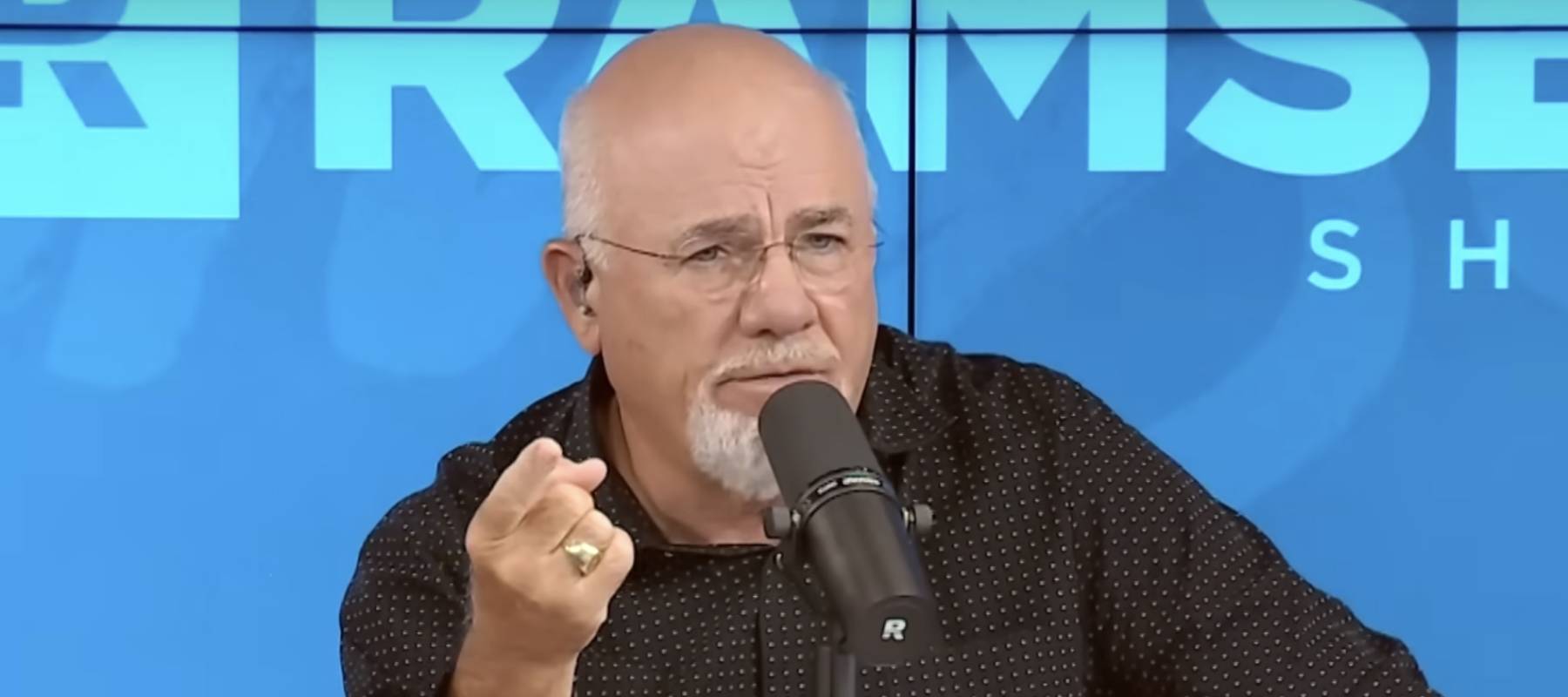
8 ways to fund real estate deals
G-Stock Studio / Shutterstock
We adhere to strict standards of editorial integrity to help you make decisions with confidence. Please be aware that some (or all) products and services linked in this article are from our sponsors.
We adhere to strict standards of editorial integrity to help you make decisions with confidence. Please be aware that some (or all) products and services linked in this article are from our sponsors.
If you’re thinking about buying an investment property but don't have the cash needed in your bank account, don't despair. Luckily, there are more financing options than you probably realize. Selecting the best option for your real estate investment strategy and the particular situation can even save you thousands of dollars. In this article, I’ll explain the different ways to fund real estate deals and the pros and cons of each.
Quick disclaimer: This article is intended to introduce you to the various options that may or may not be available to you. Just as every house is unique, every situation is unique. And lender options are constantly evolving while government regulations change over time. I recommend finding a great mortgage broker to help you consider the best financing to meet your long-term investing strategy.
1. Conventional loans
A conventional loan is the most common type of mortgage. You provide a down payment and the bank gives you the rest of the money in exchange for a lien on the property secured by a mortgage. While many banks allow some borrowers (those who plan to occupy the property as their primary residence) to put down as little as 5% of the purchase price, investors must typically put down more. Most investors pony up a 20% down payment, so their loan is not subject to private mortgage insurance (PMI).
Conventional loans are a good solution for buy-and-hold investors building a portfolio of income-producing rental properties. They are not typically used to flip houses, because these mortgages are underwritten for a term of 15, 20 or 30 years. Conventional loan lenders are not interested in providing short-term financing.
You can use a service like Monevo to compare loan options. While they don't offer mortgage comparisons, you can use a personal loan to pay for repairs or renovations on your new home.
Or you can consider a service like HomeLight, which not only connects buyers and sellers with agents but also provides home loans with zero lender fees.
Pros
- Most widely available type of financing, so you can easily shop around for best rates and terms
- Easy-to-understand
- Conventional loans typically have the lowest interest rates of any loan options
- Fewer burdensome provisions than FHA, VA or other loans
- If you have a credit score of 720 or better, you can qualify for even lower interest rates than FHA or VA loans
- No PMI if you put down 20% of the purchase price
Cons
- There is a limit to how many conventional loans you can have
- You need a good credit score (640 or higher for most conventional loans) to qualify
- Difficult to impossible to qualify if you’re buying properties through an LLC (limited liability company) rather than putting them in your personal name
- Conventional mortgages typically take three to four weeks to get through the underwriting process. This is a downside because investment properties often go to “cash buyers” who don’t need to delay the closing by attaching a mortgage loan approval contingency to their offer
- You may also have to pay a loan origination fee
2. Federal Housing Authority (FHA) loans
FHA loans are government-sponsored loans that incentivize people to purchase a home by offering a borrowing option in which the buyer needs to put down only 3.5%. The FHA doesn’t loan the money; it guarantees the loan for the lender. Since the FHA takes on some of the financial risk by insuring the payment of the loan if the borrower defaults, it’s easier for borrowers to qualify for an FHA loan than a conventional loan, and the lender is able to offer a competitive interest rate.
Pros
- Low down payment – 3.5% is all you need for a down payment. You still need to pay closing costs, but many of those costs can often be financed into the loan itself
- Easier to qualify – many banks require a credit score minimum of only 550 or 600 to qualify
Cons
- You’re required to personally live in the property for at least one year
- The FHA’s version of PMI (private mortgage insurance) is MIP (mortgage insurance premium), and you have to pay it for the life of the loan. It’s the price you pay for getting a mortgage with such a low down payment. (You can avoid MIP if you put 10% down, but that sort of defeats the purpose of getting this loan, the low down payment.)
- You can have only one FHA loan out at a time, and the loan has to be in your personal name, not that of an LLC or other entity
- There is more paperwork at closing, and it typically takes a little longer than a conventional loan
- In addition to the strict appraisal needed for loan approval — to determine the market value of the home — the house has to pass inspection by the U.S. Department of Housing and Urban Development (HUD). These additional “health and safety” inspection guidelines can be pretty strict. And if the house requires repairs to pass inspection, these repairs must be done before the sale can go through. You either need to make the repairs before you actually own the property (not recommended) or ask the seller to make the repairs at their cost prior to the sale.
- The stricter appraisal and inspection requirements make it nearly impossible to buy a fixer-upper with an FHA loan. That means you will likely have to pay market value, because the home essentially has to be move-in ready to pass the HUD inspection
3. 203(k) Loan
The 203(k) loan is similar to an FHA loan in that it’s geared more toward homeowners than investors. It is an owner-occupied, 3.5% down loan that allows you to lump the rehab costs into your mortgage. You might, for example, consider a 203(k) loan if you want to purchase a distressed property for $100,000 that needs $35,000 worth of rehab work. Your loan amount would be $135,000 to include the cost of rehab.
Pros
- You can finance the whole project with one lender
- You can widen your choices to include distressed and foreclosed properties in addition to move-in ready properties
- You can negotiate a better deal on a property in need of rehab, which means you can likely benefit from instant equity
- If you contract the rehab work yourself, you can negotiate costs below retail prices – it’ll cost you less and you’ll build equity faster
- You don’t need to find additional cash for rehab costs, and when you’re finished, the home will likely be worth more than the loan amount
Cons
- Available only to owner-occupants – you have to live at the property as your primary residence
- Any work you do yourself will not be covered under the 203(k) loan. You’ll need to have licensed contractors fill out the necessary paperwork
- Contractors must be vetted and approved by your lender
- Typically, there's more paperwork involved before, during and after settlement
4. Veteran Affairs (VA) Loan
Qualifying for a VA loan is one of the great advantages of serving in the military. This loan offers no-down-payment loans to veterans, service members and select military spouses. Similar to the FHA loan, you’ll be required to live in the property for at least one year. One great thing about VA loans is that you can buy as many houses as you want as long as you don’t exceed the set amount you qualify for and you live in each one for at least a year. The limiting factor isn’t the number of houses; it’s the entitlement amount. (Along with offering banking services, USAA is one popular VA mortgage lender.)
Pros
- No down payment. (You will have some closing costs and fees, but you don’t have to come up with any down payment to qualify for a VA loan.)
- VA loans offer the lowest interest rate available
- No required PMI for VA loans
- Lower closing costs. With VA loans, the seller pays some of the closing costs the buyer would normally pay. In Maryland, for example, the seller has to pay all of the 2% property transfer tax instead of the usual 50/50 split between buyer and seller
- Not limited to one property; you can buy multiple properties with a VA loan as long as you qualify
- Higher allowable debt-to-income ratio
- You can effectively build a portfolio of rental properties with no money down by living in each one for a year, renting each out and moving on
Cons
- Not everyone has access to this type of loan
- There’s a VA funding fee that gets lumped into your loan that the VA charges to keep the program running
- You’ll be required to live in the property for one year
- More paperwork at settlement
5. Adjustable-Rate Mortgage (ARM)
An adjustable-rate mortgage is exactly what it sounds like: a loan in which the interest rate fluctuates with the overall market interest rate. There are a lot of variations on ARMs.
With most ARMs, your interest rate is adjustable for the full term of the loan, but there are “hybrid” ARMs with which your rate is fixed for a certain number of years before transitioning to the adjustable rate. I personally stay away from ARM financing because of the risk of increasing expenses on my investment properties.
Pros
- Typically, ARMs have lower initial interest rates than fixed mortgages
- There is a chance that your interest rate will decrease over time
- Ideal for short-term financing needs because over the short term, interest rates don’t fluctuate widely. (Historically, rates increase or decrease slowly over time.)
Cons
- Interest rate (and therefore cash flow) is harder to predict reliably with an ARM. So there’s an element of risk that you’ll have to consider and worry about
- ARMs are somewhat more complex to understand and analyze
- Over the last few years, interest rates have been at a historical low but are steadily rising now. There is a good chance that your interest rate will increase over time, which increases your monthly payment
6. Private money
Private money is exactly what it sounds like: financing sourced from individual (private, rather than institutional) investors. Seeking financing from family, friends, co-workers or people you’ve met at your local real estate investing meetups are all potential sources of private money. Typically, private money will be more expensive than a conventional mortgage, but terms are much more flexible. Also, the qualifications to obtain this type of financing are much more relaxed.
Pros
- Few qualifications are needed. You simply need to find someone who is willing to invest with you
- Very flexible loan structure. The terms of the loan can be whatever you and the private individual agree to
Cons
- Typically carries a higher interest rate than any of the more conventional types of loans mentioned above
- You’ll likely need to hire a lawyer to draft the financial contract (or at least review the final contract if you’re using a template)
- Terms are typically shorter (3–5 years). This, coupled with the higher interest rates, makes for a much higher monthly payment
- If things do not go right, it could create some bad blood between you and the lender
7. Hard Money
Hard money is similar to private money, but instead of coming from an individual, the funding comes from a hard-money lender. The term “hard money” is fitting, because the lenders use the hard asset (the property) to secure the loan. Hard-money loans are short-term loans, most often used by borrowers who buy to fix up and flip. Typically, you’ll get hard money to cover 70–80% of the property’s purchase price before rehab, so the lenders must be confident that the property is worth more than the loan and their cost to liquidate the property if you default. Hard-money lenders typically charge high interest rates and include other fees such as loan origination fees.
Pros
- Very flexible loan structure
- Easy to qualify for because the loan is secured by the property rather your personal financial situation and your ability to pay back the loan over time. However, if you’re deemed a higher-risk borrower, you’ll pay more than a borrower who is considered less risky
- Hard-money lenders understand the unique needs of real estate investors and offer quick loan approval and funding. Very quick turnaround from application to funding allows you to negotiate more favorably when putting in offers – it’s the next best thing to having cash in hand
- Hard money loans are easy to find
Cons
- Higher interest rate than other loans: 10–12%
- Hard-money loans can be even more expensive if you are perceived as risky (if you don’t have a good credit score and a lot of real estate experience)
- There are shorter terms: Hard-money loans are usually for a year or less, at which time the full amount needs to be paid back
- If you decide to rent the house instead of flipping it once you’re rehabbed it, you’ll need to refinance out of the hard-money loan. And it may be difficult to refinance your entire purchase (plus rehab) price into a traditional mortgage due to market fluctuations
8. Home Equity Line of Credit (HELOC)
A home equity line of credit, popularly known as a HELOC, is what people can use if they have already purchased a home and have some equity tied up in it. For example, let’s say you’ve lived in your primary residence for 10 years, all the while paying down the mortgage and benefiting from appreciation. The appraised value is now $500,000 and your mortgage payoff is $250,000. You can take out a HELOC to tap into the $250,000 of equity you have in the property ($500,000 value minus the $250,000 loan outstanding). You can then use this $250,000 to purchase on an investment property.
You can also use a service like Hometap, which is an alternative to getting a loan. Hometap doesn't provide loans but invests in the property's equity. You get the cash to spend as you want, for example, on buying a second home or rental property. Then you settle Hometap's investment in your home or sell the property before the end of the 10-year term.
Pros
- It’s a cheap financing option in terms of interest rates and closing costs
- You can pay it off whenever you like. You pay on the outstanding balance, not the entire HELOC
- The cost to close on a HELOC is much lower than the cost to obtain other financing
- HELOCs are the most flexible type of financing. You pay interest on only the amount borrowed at the time. In the example above, you would have $250,000 available to use, but if you used only $100,000 of it, you would owe interest on only that outstanding amount
- When used strategically and managed well, HELOCs are an excellent way to leverage your wealth to build more
Cons
- Essentially, you are spending the equity in your original home, which in effect increases the cost to retain it
- Most HELOCs have adjustable rates. This can be a challenge when trying to predict your financing costs over time
Conclusion
There are multiple ways to access financing to invest in real estate. Detailing the ins and outs of each one is beyond the scope of this article. Hopefully, I’ve introduced you to one or two that you’d like to research in more depth on your own.
I highly recommend you consider all your options rather than just jumping into traditional financing such as a conventional loan. Discuss your strategy and options with an experienced loan officer who has worked with investors and come up with the best financing arrangement for your particular circumstances, understanding that those circumstances change over time.
I’ve used several different forms of financing, depending on my cash flow situation and the unique circumstances of each particular deal.
I started out investing in real estate by transferring my 401(k) funds to a self-directed individual retirement account (SDIRA). Once I’d deployed those funds and wanted to keep investing in real estate, I took out a HELOC on our primary residence to purchase and rehab a property. The HELOC is probably my preferred strategy, because it’s so flexible and inexpensive.





